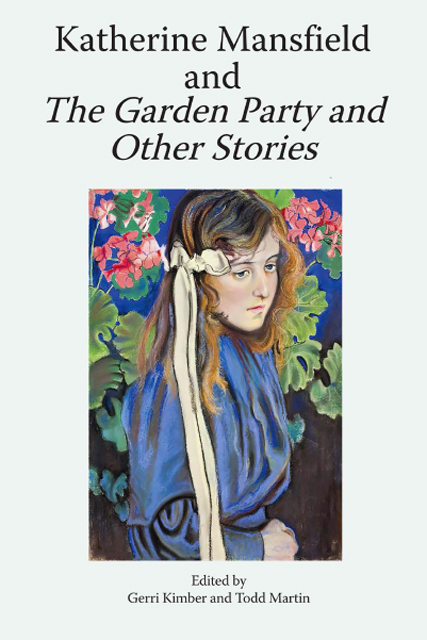Katherine Mansfield’s ‘Marriage à la Mode’: ‘far too facile’?
Published online by Cambridge University Press: 03 June 2023
Summary
‘Marriage à la Mode’ (1921) is one of six stories that Katherine Mansfield wrote for the Sphere, ‘a fashionable illustrated newspaper targeted at British citizens living in the colonies’. Due to the ‘popular’ rather than ‘literary’ character of the journal, ‘Marriage à la Mode’ tends to be regarded as one of her minor works, classed as one of ‘the bill-paying magazine stories of 1921’. However, on closer inspection, the story turns out to be technically complex and of literary merit. Indeed, Saralyn R. Daly argues that ‘clearly Mansfield took the Sphere stories as seriously as her important “At the Bay”’.
In this essay I would like to draw attention to the dialogic nature of the story, especially its connection with the realm of Mansfield’s beloved ‘old masters’ – about which she states, ‘the more one lives with them the better it is for ones work’ – and to demonstrate how the artistic past influenced Mansfield’s own contemporary criticism of modern English bourgeois life. I argue that the strength and complexity of the short story lies in its frequent allusions to the artistic and the literary realm of the Old Masters. They become the life and soul of the story and, as a result, enrich its reading.
The very first allusion to Old Masters is evident in the title, which seems to direct the reader to William Hogarth’s series of paintings called ‘Marriage à la Mode’. The connection introduced via the title suggests that the issues Mansfield addresses in the story reflect those depicted in Hogarth’s works. Subsequently, his series may be understood in such a way as to reinforce Mansfield’s satire and to complement the events of the story. For example, the reader expects a tragic end since Hogarth’s narrative paintings tell the story of a fashionable marriage that ends in disaster. The series was targeted at the new merchant class of eighteenth-century England, which was gaining power because of its increasing wealth and, quite frequently, arranged marriages with members of aristocracy who offered their titles in exchange for money. The difficulties stemming from such marriages, which resembled business transactions and economic unions rather than relationships based on love and understanding, are vividly depicted and mocked in Hogarth’s series.
- Type
- Chapter
- Information
- Publisher: Edinburgh University PressPrint publication year: 2022



